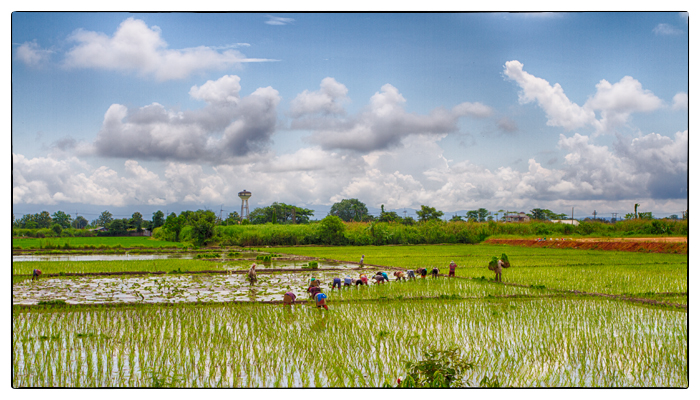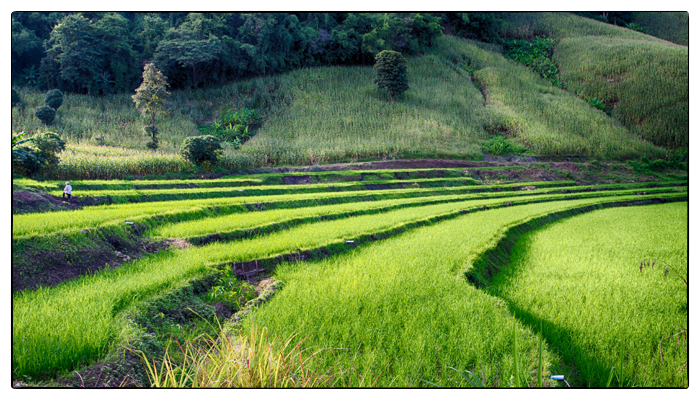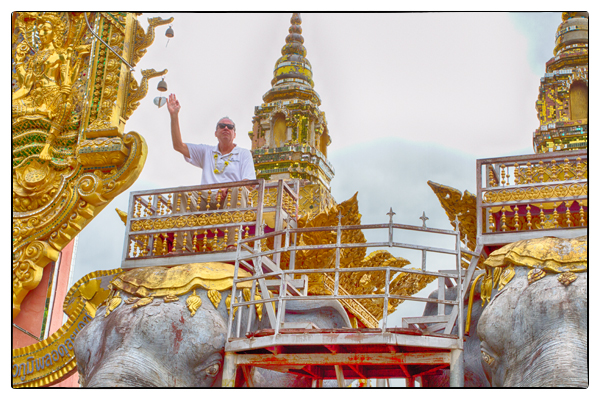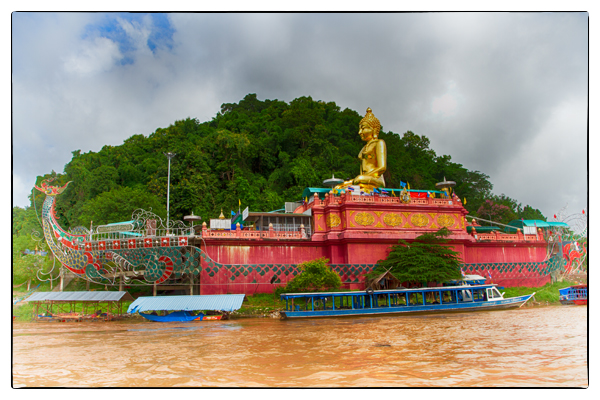
Workers transplanting rice seedlings in paddies near Chiang Rai in Northern Thailand. Photos by David Lansing.
Before I came on this trip I asked my daughter, who has spent some time in Thailand, what I needed to know. “Be prepared to be overwhelmed by rice,” she somewhat cryptically wrote back.
I think I now know what she meant. Rice is ubiquitous in Thailand. It’s part of almost every meal, of course, but it also shows up in their art, their music, their festivals, and even in their religion.
There is a particular Buddha image—a standing Buddha with both arms pointing to the earth—that is particularly popular here in Northern Thailand. It is known as the “Calling for Rains” Buddha because the rice crop is so dependent on rain.
The rice goddess must be honored before cultivation if the crop is to be bountiful. The rice grain contains a spirit (kwan) and is planted in the rainy season to become “pregnant.” The Thai word for irrigation (chon prathan) translates as “gift of water.”
It is the rainy season here in Thailand. Every day it rains. Sometimes for 20 minutes, sometimes for two hours. We drive through the countryside and see mile after mile of rice paddies. And in the paddies are the workers, transplanting seedlings in row after row as the rain comes down. All part of a cycle that has gone on here for thousands of years.








Recent Comments